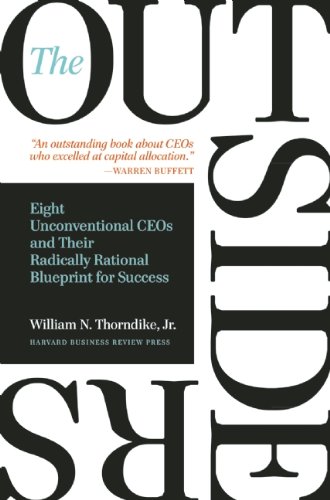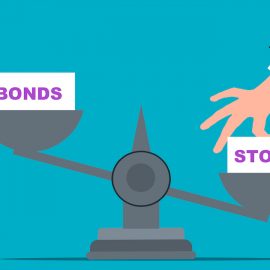

This article is an excerpt from the Shortform summary of "The Outsiders" by William N. Thorndike, Jr. Shortform has the world's best summaries of books you should be reading.
Like this article? Sign up for a free trial here .
Are you looking to learn the secrets of some of the world’s most successful CEOs? A big part of their success is their commitment to business acquisition strategy.
A great CEO should have a smart business acquisition strategy, since acquisitions are vital for company growth. You can read about business acquisition strategy and the ideas of top CEOs below, including business tycoon Warren Buffett.
What Is a Business Acquisition and Why Is Acquisition Strategy Important?
Outsider CEOs resisted focusing on reported earnings, which present a muddled reflection of company performance because of capital expenditures, business acquisitions, and other accounting artifacts. Instead, they focused on cash flow and then-innovative metrics like EBITDA (earnings before interest, taxes, depreciation, and amortization). This affected their operations deeply, from how they financed business acquisitions to their compensation schemes for employees, and how they developed their business acquisition strategy.
This relentless focus on cash flow also allowed them to avoid counterproductive distractions, such as costly business acquisitions for the sake of growth that would later prove unprofitable.
Business Acquisition Strategy of Capital Cities and Tom Murphy
When acquiring companies, Murphy prospected carefully for good deals. He had a simple benchmark—the business acquisition should have a “double-digit after-tax return over ten years without leverage.”
He was known for being fair. He’d ask the seller what a fair price was, and if he thought it was fair, he’d pay it. If he didn’t, he countered once—if rejected, he walked away. He never engaged in hostile takeovers.
Often, the reputation of Capital Cities preceded him. They were known for being market leaders and fair employers. This lowered the hesitation of potential business acquisition targets.
Business Acquisition Strategy of Teledyne and Henry Singleton
Singleton chose his acquired companies deliberately. Like Murphy at Capital Cities, Singleton had a financial benchmark for business acquisitions—never paying more than 12 times earnings, and often paying single digit-multiples. In comparison, Teledyne’s stock price ranged from 20 to 50 times earnings, thus making many business acquisitions a great deal. This was a hallmark of his business acquisition strategy.
Singleton also chose to focus on companies that were profitable, growing, and in leading market positions. They were often in niche markets. He avoided acquiring struggling turnaround companies, a common target of other conglomerates at the time.
Business Acquisition Strategy of General Dynamics and Bill Anders
Outsider CEOs tended to avoid concrete strategic plans, instead preferring flexibility to adjust to the circumstances.
When Anders was actively selling businesses, he had actually intended to grow the fighter jet business through business acquisition. He approached Lockheed’s CEO with the intent to buy their business, and was surprised when Lockheed instead countered with a generous offer to buy General Dynamics’s F-16 business. Had Anders been more stubborn about retaining the business, he might have missed this opportunity.
Likewise, a company needs different strategies in different situations. Anders grew the company’s value by aggressively shedding its non-core businesses and shrinking the company through improved operations. Just 6 years later, Chabraja grew the business lines through thoughtful business acquisitions, including the massive bet on Gulfstream. Even more notably, he did so by selling stock, a rare move among outsider CEOs but appropriate at the time given that their stock was at an all-time high.
Business Acquisition Strategy of TCI and John Malone
As CEO from 1972 to 1991, John Malone pursued a virtuous cycle strategy—grow subscriber count through acquisitions of cable providers, which would give scale to negotiate lower fees with content providers, which would make business acquisitions of cable companies further cheaper.
Like many acquisitive outsider CEOs, Malone used debt to finance business acquisitions. As described earlier, he saw that growth for cable companies could come more cheaply than expected—depreciation of capital expenditures and interest expenses would reduce taxes, even if the company had healthy cash flow. Furthermore, increasing scale allowed TCI to access cheaper debt.
As described earlier, Malone engaged in business acquisitions to fuel the virtuous cycle of subscriber growth, leading to better economic terms with content programmers, leading to further subscriber growth.
Like many outsider CEOs, Malone wasn’t haphazard about business acquisitions. He had a clear rule—pay a maximum of five times cash flow, after all the fee discounts and operational efficiencies were realized. This simple rule let him move quickly when the price was right, and let him walk away quickly when it exceeded his maximum price.
After the acquisition, like Tom Murphy and Capital Cities, Malone and Sparkman would institute a lean environment and cut all unnecessary expenses. For example, for one cable franchise, TCI cut payroll in half and moved the team from a downtown skyscraper office to a tire warehouse.
Business Acquisition Strategy of The Washington Post and Katharine Graham
In 1971, Graham took the Washington Post Company public to raise money for business acquisitions. She started by buying the Trenton Times, which was a #2 paper in a competitive market and showed mediocre performance. This would teach her discipline in acquisitions going forward.
In 1974, a relative unknown began buying stock in the Post, ending with 13% ownership. His name was Warren Buffett. While her board counseled her to avoid the unknown, she met with him and found his advice indispensable, and she invited him to join the board. He would prove to be vital throughout Graham’s tenure, advising her around capital allocations.
In 1975, the Post faced a worker’s strike from the paper printers. Determined not to give in, Graham hastily hired a crew to man newspapers, publishing for 139 days before the printers conceded. Winning many favorable concessions, Graham made big improvements to the Post’s margins.
Around this time, Buffett advised Graham to repurchase Post shares, given their low prices. She repurchased 40% of Post shares, an unusual move that her competitors didn’t follow.
In 1981, the other major newspaper in Washington, the Washington Star, shut down. The Post became a monopoly daily newspaper in Washington, D.C., which greatly increased its circulation and profitability.
During the 1980s, the newspaper industry went on a business acquisition spree, bidding up prices aggressively. Graham didn’t participate, finding the assets overpriced. Instead, they looked to businesses outside media, acquiring companies in telephone, test preparation (Kaplan), and cable television (from Capital Cities). Each of these would both rise in value and provide a valuable counterweight to the newspaper business as it declined due to the Internet.
As the early 1990s approached with a recession, the Post became acquisitive while its competitors sat back, over-saddled with debt. Graham purchased companies at significant discounts in cable television, TV, and education.
Business Acquisition Strategy of Ralston Purina and Bill Stiritz
Stiritz focused on companies that could be reinvigorated by Ralston’s expertise in marketing, product development, and distribution. He liked companies that had been neglected by their previous owners, such as Continental Baking and Energizer.
When purchasing companies, Stiritz preferred to negotiate through direct contact, not with investment bankers, whom he considered parasitic. He would often show up alone to meetings where the opposition was staffed with a row of advisers
Business Acquisition Strategy of General Cinema and Dick Smith
As with CHH, Smith knew that he had leverage in this business acquisition. HBJ’s complicated debt required a complicated deal, which would scare off buyers. However, publishing had low capital requirements and few assets, thus improving its economics.
Smith’s business acquisitions often featured special opportunities where he could exert leverage.
- For Pepsi beverage bottlers, Smith knew that the fragmentation of the industry and #2 status of Pepsi meant better prices for buying each bottler.
- For the retailer CHH, he knew the tight turnaround meant low competition, while he could uniquely move fast given his clear acquisition criteria.
- For HBJ, he knew that the complicated debt structure would turn away buyers
Business Acquisition Strategy of Berkshire Hathaway and Warren Buffett
Having had extensive experience in investing before starting Berkshire Hathaway, Buffett had a wider range of investment options than most CEOs. Typical CEOs only look within their immediate industry. In contrast, Buffett has made investments in a vast array of industries (from beverages to industrials). Even his investments take a wide range of flavors, including investments in both private and public companies, both minority investments and complete business acquisitions, and at times making big bets in bonds and currencies.
Buffett is remarkably quick at making a purchase decision. He spends less time on due diligence and often makes deals within days. He never visits company locations and rarely meets management. He can move quickly because he only invests in industries he knows deeply, and he has honed his investment criteria. This lets him filter the key performance indicators of a business.
Buffett also avoids auctions, believing they drive up valuation needlessly. He prefers that owners call him and offer a price, with Buffett returning his answer within 5 minutes.
Without a sustainable and intelligent business acquisition strategy, none of the CEOs or companies would have been able to achieve growth. Part of what makes a successful company is its ability to grow, and therefore increase in value.

———End of Preview———
Like what you just read? Read the rest of the world's best summary of William N. Thorndike, Jr's "The Outsiders" at Shortform .
Here's what you'll find in our full The Outsiders summary :
- What great CEOs like Warren Buffett do that average CEOs don't
- How to master the art of capital allocation
- How to be a great manager that your team is excited to work with





